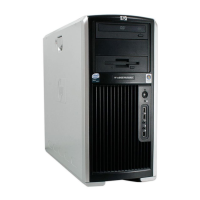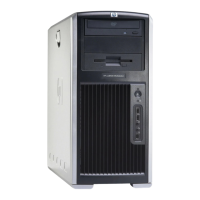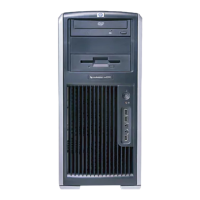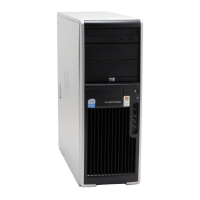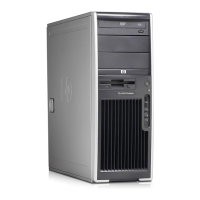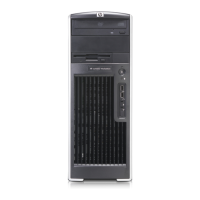Solving audio problems
Table 6-8 Audio problems
Problem Cause Solution
Sound does not come out of
the speaker or headphones.
Software volume control
is turned down.
Double-click the Speaker icon on the taskbar
and use the volume slider to adjust the volume.
The external speakers
are not turned on.
Turn on the external speakers.
External speakers are
plugged into the wrong
audio jack.
See the sound card documentation for proper
speaker connection.
Audio cable not
connected.
Connect audio cable between CD or DVD-
ROM drive and the system board.
Digital CD audio is
not enabled.
Enable digital CD audio:
1. From the Control Panel, select System.
2. On the Hardware tab, click Device
Manager.
3. Right-click the CD/DVD device and
select Properties.
4. On the Properties tab, be sure Enable
digital CD audio for this CD-ROM
device is selected.
Headphones or devices
connected to the line-out
connector mute the
internal speaker.
Turn on and use headphones or external
speakers, if connected, or disconnect
headphones or external speakers.
Volume is muted. 1. From the Control Panel program, click
Sound, Speech and Audio Devices, and
then click Sounds and Audio Devices.
2. Clear the Mute check box.
Computer is in Standby
mode and the system
LED is flashing.
Press the power button to resume from
Standby mode.
CAUTION: When attempting to resume from
Standby mode, do not hold down the power
button for more than four seconds. Otherwise,
the workstation will shut down and you will lose
your data.
Noise or no sound comes
out of the speakers or
headphones.
1. If using digital speakers that have a stereo
jack and want the system to auto-switch to
digital, use a stereo-to-mono adapter
to properly engage the auto-sense feature
or use the multimedia device properties
to manually switch the audio signal from
analog to digital.
2. If the headphones have a mono jack, use
the multimedia device properties to switch
the system to analog out.
148 Chapter 6 System diagnostics and troubleshooting ENWW

